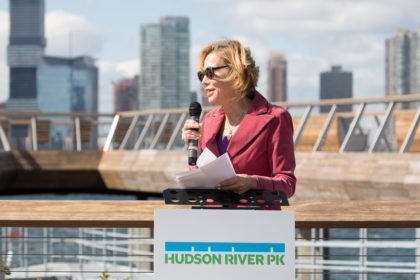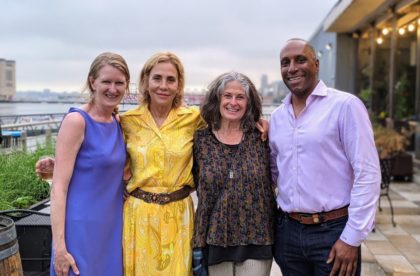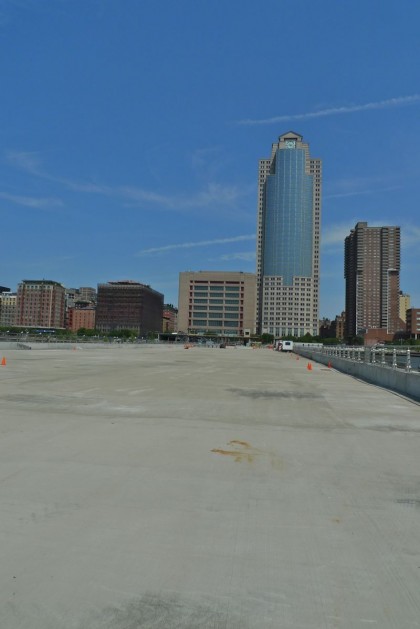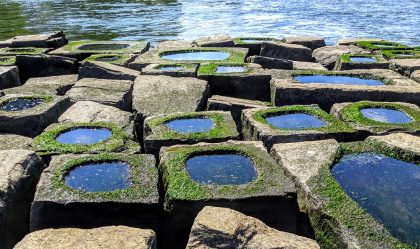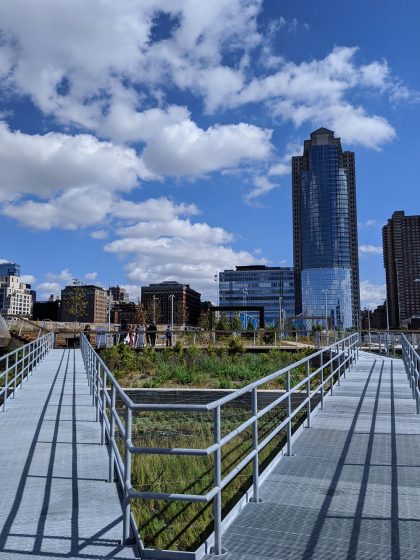Celebrating 25 years of Hudson River Park, Part 3
Hudson River Park was created by the state legislature 25 years ago, and to celebrate it, I wanted to hear some origin stories from the park’s presidents. Between them, these four people have guided the construction of Tribeca’s waterfront as we know it.
In 1998, the master plan called for 13 piers devoted to public open space, including our own Piers 25 and 26. Then-Governor George Pataki tapped Rob Balachandran to be the Hudson River Park Trust’s first president. Connie Fishman served as the park’s president from 1999 till 2011.
When Madelyn Wils moved to Duane Street in 1985, just weeks before her first son was born, the piers in the neighborhood were a jumble of twisted, rotting steel and lumber, with rusting old gantries. Or, as her son would eventually learn, a fabulous playground. “It wasn’t the safest thing in the world but hey, it was the ‘90s.”
At that time there were no little leagues and hardly any parks – in fact, when she joined Community Board 1 a few years later, she suggested they create a Parks Committee – there had been no need for one until then. “All this came out of need. There was just nothing down here,” she said. She was eventually appointed to the design committee for Rockefeller Park and to the advisory board of the Hudson River Park Conservancy, the precursor to the Trust.
“I found my goal there was to ease people’s fears and find ways for them to participate without slowing down the project,” she said. “So much of the community was skeptical that it would really become a park. I tried to find a framework for people to say what they wanted to see there, and it worked.”
From Madelyn:
When the legislation that created Hudson River Park Trust was enacted in 1998, it was determined that the entire public portion of the park would cost $320 million to build. Given that this was the first park to be constructed in the water, no one at the time really understood the cost of rebuilding the park and all the infrastructure. Although my predecessor was extremely capable and diligent, only about half of the park was able to be built within that budget.
In 2011, when I returned to the park as its president and CEO, I knew I had to create public/private relationships to find funding to finish the park. Because of the lack of resources, there was a several years’ pause in construction of Hudson River Park. I felt it was important to re-design the remaining piers and esplanade, since it had been 15 years since their original design. Landscape architecture had evolved, as did the communities around the park, and it was necessary to address both as we moved forward to complete the park.
In 2013, I embarked on a plan to raise money to re-build Pier 26 and finish the Tribeca section of the park. It took almost three years, but was successful in getting matching grants from Citigroup, The Lower Manhattan Development Corporation and The City of New York to fund a $39 million project.
Going further back in time to 2008, when the piles and deck for Pier 26 were built, there was not enough public funding left to build the pier back to the size of its original footprint. Therefore, once our funding was in place, in 2017 we hired the landscape architecture team to re-design the pier. The first task was to figure out how to expand the footprint and re-capture the 200 feet that was lost.
Given the Trust’s interest in ecological education and our increased activity in providing STEM education to students from all five boroughs, I imagined building an ecosystem out in the river, 800 feet from shore. Nothing like this had ever done before and this would be an experiment to see if essentially, a manmade wetland could survive and thrive this far out into the river.
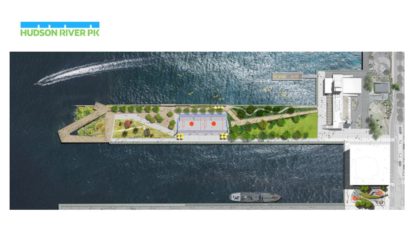 After exploring the possibility with the team, which included experts in building wetlands, we determined that we could construct an ecosystem that would include a rocky salt marsh with tide pools, native plants and oysters. Then we would erect a deck over the area so people of all ages could watch how the habitat changed during high and low tide, as well as enjoy the beautiful views of the Hudson River and The Statue of Liberty in New York Harbor.
After exploring the possibility with the team, which included experts in building wetlands, we determined that we could construct an ecosystem that would include a rocky salt marsh with tide pools, native plants and oysters. Then we would erect a deck over the area so people of all ages could watch how the habitat changed during high and low tide, as well as enjoy the beautiful views of the Hudson River and The Statue of Liberty in New York Harbor.
When I presented our idea to the regional director of the state’s Department of Environmental Conservation, it was met with a healthy amount of skepticism. One of the roles of the DEC is to issue permits for building on state owned bodies of water. After studying the issue, the regional director called and told me that his staff thought I was completely crazy, but he was going to let us build it anyway. He believed in our mission and thought it would allow people to get close to the river and its habitat and be a great learning tool that could help educate all those who visited.
Pier 26 was completed and opened in October 2020, during Covid. To this day, although all the plantings on the manmade wetland have not flourished, the amount of life and the habitat that has taken hold is quite remarkable. The experiment worked and the Pier 26 tide deck, has happily become one of the most popular features in Hudson River Park.







